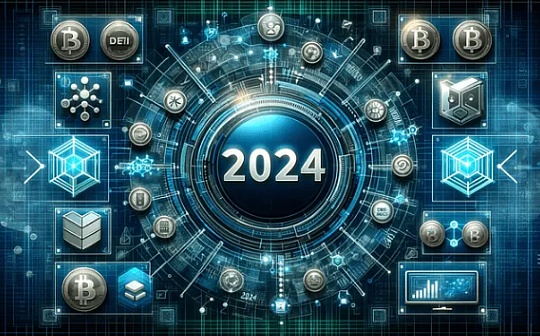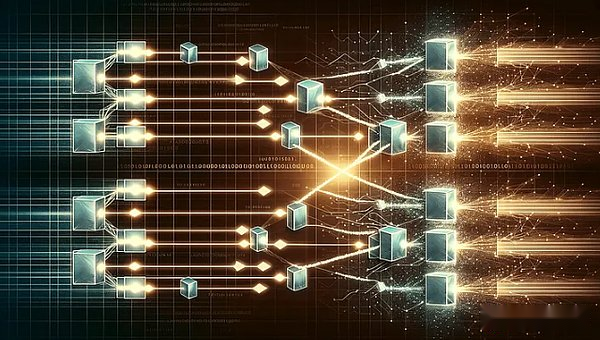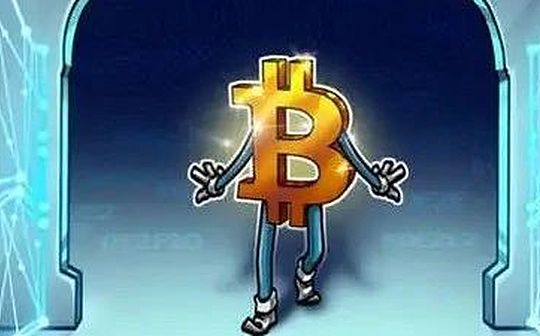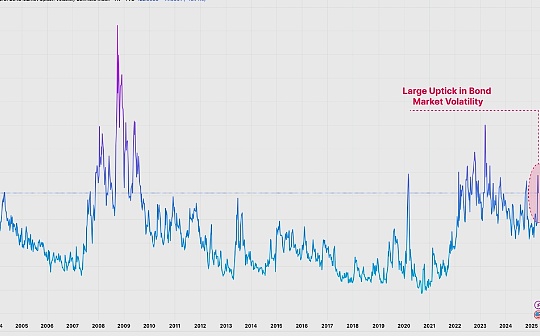
Author: Mona Tiesler, Translation: Vernacular Blockchain
The development of blockchain technology has continued to develop, breaking through the possibility of decentralization system.In this article, we will explore the 10 breakthrough concepts of the blockchain ecosystem in the future.From account abstraction to parallel EVM, each idea plays a vital role in enhancing scalability, security and user experience.
1. Abstract account
Account abstract is a paradigm change in blockchain design, which aims to separate account control from its ownership.Traditionally, the blockchain account is owned and controlled by the private key.Through account abstraction, it can distinguish ownership and control, so as to achieve more flexible account management and quickly improve security and user experience.
In traditional fields, the functions of external accounts (EOA) are limited, and they cannot actively encourage or promote the addition of next generation of users.Challenges related to managing private keys make some users unwilling to bear the responsibility of protecting their keys.Take Metamask as an example. It is a widely used browser -based wallet for EOA.However, because it cannot execute smart contracts, the practicality is limited to the application of applications that users must give up their account control.
This restriction is in sharp contrast to the formation of contract accounts.The contract account can deploy smart contracts to enrich wallet functions and customized.The introduction of account abstraction simplifies the development of smart contract accounts, which aims to define and supervise the clear purpose of user accounts.This innovation method has brought many advantages, including the establishment of a strong security agreement, executing batch transactions, and the ability to restore accounts without the need for seed phrases.
This concept has significantly enhanced the customization of account functions and paved the way for innovative cases and decentralized applications (DAPP).
2. Block space as a product
Blockspace is the basic product in the field of blockchain technology. It is a unique and popular “product”. It has changed the dynamics of digital landscapes.Unlike traditional products, block space is not produced by individual enterprises; on the contrary, it originated from the centralized network, such as managing Bitcoin and Ethereum networks.
The scarcity of block space has triggered controversy about its value, and consumers use paid billions of dollars for each year.GAS price is a signal for block space (itself is the integration of computing, storage, and bandwidth resources). All L1, L2, and side chains are its producers and sellers.It is worth noting that the network effect around the seller’s block space has promoted higher pricing and produced a similar effect on virus transmission observed in social media applications.The market share of block space is constantly changing, and the rapid growth of Ethereum costs shows this, but relatively speaking, the same is true on platforms such as Avalanche, Polygon, Arbitrum, and Optimism.
Today, the application on the blockchain can operate at zero -expense once it is deployed, because the user pays the operating cost, which is different from the traditional model of enterprises that bears infrastructure costs.However, as mentioned above, the account abstraction may reverse this situation, leading to the cost of the user’s GAS cost in the future, thereby returning the cost of block space to startups and enterprises.The continuous development of block space marks the key development of the digital economy and has a profound impact on the future of decentralized technology.
3. blobspace
Blobspace appears as a changeable solution, which promotes the chain storage of large data sets, thereby reducing the burden on the blockchain and improving the efficiency and bearingability of the application.It is a key change in the L2 pattern with the integration of the EIP 4844 upgrade (Decun).Unlike traditional block space, Blobspace has introduced a novel resource market on Ethereum, surpassing the traditional block sales model, and adopting a more dynamic structure involving the “BLOB” transaction.These blobs are essentially the temporary block of transaction data, representing a more flexible and more efficient information processing method.
The origin of Blobspace can be traced back to Danksharding. This is the concept design proposed by Ethereum researcher Dankrad Feist. The concept of shards is redefined as different blockchains, and the shards are redefined as multiple data BLOB in the block.This innovation method not only completely changed decentralized data storage, but also established a dedicated space for managing large -scale non -structured chain data.By optimizing the cost of transaction on the chain and enhancing network scalability, BlobSpace opened the door for storing different data types, including complex application data on Ethereum’s second layer of ecosystems.
4. L3 (layer 3 expansion solution)
The 3rd layer expansion solution constitutes a comprehensive set of technology, which aims to effectively solve the scalability challenges in the blockchain network.Unlike the expansion of the first layer (the update of the block size, the consensus mechanism or the database partition), and the expansion of the 2nd layer (using methods such as bundling transactions, parallel processing or under -linked transactions), layer 3 solution (L3)Beyond these traditional methods.By focusing on innovative methods such as status channels, side chains, and shards, L3 aims to significantly increase transaction throughput without affecting the key aspects of decentralization and security.
At the same time, the third -level protocol is strategically constructed on the 2nd infrastructure as a custody platform for decentralized applications specific to the application.This integration method not only solves scalability, but also solves various problems such as interoperability and customization.Nevertheless, the lack of L3 standardized infrastructure still brings some problems.The famous examples of the 3rd protocol include ORBS, Arbitrum Orbit, and ZKSync Hyperchains.
5. MEV (miner/maximum extraction value)
MEV is a concept of acknowledging economic incentives that recognize miners’ sorting, delayed or reviewing transactions to maximize profit.This phenomenon often leads to low efficiency and increased transaction costs.In order to offset the potential adverse effects of MEV on actual protocol users, blockchain projects are actively seeking strategies such as implementing consensus algorithms and MEV recovery mechanisms.These measures aims to achieve democratization of income sharing and achieve fair allocation between participants.In addition, the work includes optimizing transaction sorting by advocating the decentralization of sorters, using MEV extraction protocols, and capturing cross -chain MEVs.
UNISWAPX’s cross -chain technology has played a vital role in achieving cross -chain MEV capture.In order to cope with the potential negative effects on real agreement users, measures such as fair allocation, privacy protection, and chain order matching are being adopted.The modularity and decentralization of MEV participants is an indispensable part of the Ethereum route map, which helps to create a more powerful and safer MEV ecosystem.MEV’s democratization involves exploring the fields of anti -MEV DEX and other fields, transferring profits to trading users, and creating a positive trading environment.The fair market competitive environment, efficient interest distribution mechanism and decentralized structure are essential for the healthy development of the healthy development of innovation and ensuring the healthy development of the ecology on the chain.The neutral nature of searchists and block construction technology emphasizes the importance of responsible use of their impact on a wider trading environment.
6. Token bound account
Ethereum improved proposal ERC-6551 introduced the concept of Token binding account (TBA). It is essentially a smart contract that has its own address and is managed by a specific NFT.It is regarded as a mini wallet directly bound to NFT to enhance security, and at the same time, it also provides a mechanism for accurate control access and permissions.
In essence, the TBA expands the functions of ERC-721 and ERC-1155 token (typical limited standards of NFT), so that it has its own smart contract account.This enables NFT to have digital assets (replacement or irreplaceable) and interact with it, while interacting with decentralized applications (DAPP) more seamlessly.For example, artists can link their art NFT to TBA containing all other art, so that they can manage multiple tokens in a single account.
In the field of DEFI, TBA enables NFT to participate in liquidity mining or provide liquidity.In addition, the assets represented by NFT have obtained the ability to have other assets or participate in additional intelligent contracts in the game.In the context of DAO, NFT symbolizes the right to vote, while TBA has the right to directly participate in the proposal vote.This scalability makes NFT more flexible and more useful in different scenarios, providing wider application possibilities.
7. Validity proof
Effective proof played a vital role in ensuring the integrity of the data on the blockchain.It can be said that they have fundamental advantages than fraud proves, because they ensure that they will not accept any other content except for the correct state conversion.Validity proof is a cryptography proof that allows network participants to verify the correctness of transactions or calculations without re -execution of them.They improve the efficiency of the blockchain network by reducing redundancy and improving the overall auditability of the data on the chain, which is currently mainly concentrated on L2.The main disadvantage is that each state conversion requires validity proof, not just that this conversion is controversial, this will affect scalability.
ZK-Rollups uses effectiveness to prove to prove the effective state conversion of the parent chain-usually use it with proof systems such as SNARK and Stark.(However, please note that these proof systems (such as SNARK, Stark) can be used as fraud proof or validity proof. The proof system is a way we prove, and fraud or effectiveness is the content we prove.)
8. Re -mortgage and liquidity of mortgage (re -)
Re -mortgage refers to the process of reinvestment of mortgage assets to obtain additional rewards.This concept plays a vital role in motivating long -term participation in the blockchain network.Liquid RESTAKE is further, allowing users to trade or use their pledged assets without waiting to lift the pledge period.This flexibility enhances liquidity and promotes a more dynamic ecosystem.
In the field of blockchain, the importance of re -mortgaging is increasingly prominent, especially as Eigenlayer is about to launch.Eigenlayer contracts have been deposited more than $ 1 billion to compete for fierce competition between the important roles of the EIGENLAYER ecosystem.The competition is expected to extend to the LIQUID RESTAKE token (LRT), exceeding the previous battle of LIquid Stake token (LST).LRT promises to provide the revenue of native ETH pledge, as well as the additional income of the re -pledged network such as EIGENLAYER.These Token are associated with the security model of Eigenlayer to help minimize access control and permissions in the blockchain network.
Driven by the continuous wave of airdrops, the 2024 young rail may have prosperity because theoretically two airdropping opportunities can be used at the same time.Projects like Swell and Puffer are considered to be a competitors worthy of attention. They have additional reduction protection and unique functions such as industry experts, making them a key participant in the development of LIquid RESTAKEN.
9. Data usability layer
Data availability (DA) layer solves the challenge to ensure the availability of data under the chain in the decentralized system.These layers ensure that data related to smart contracts or decentralized applications maintain accessible and verified.The data availability layer can help improve the overall reliability and efficiency of the blockchain network by preventing the unusability of data.
DA is compared with a bandwidth layer, and the cryptocurrency pattern may be transformed from slow and expensive to fast, cheap and rich -all these will not affect decentralization.DA is considered to be the main bottleneck of limiting the potential of the blockchain network to give full play to the potential of resources and throughput.
An exciting development in this field is to launch EIGENDA, which is the first active verification service (AVS) of Eigenlayer.As an additional source of income, EIGENDA is preparing to contribute to the LIquid RESTAKE Token (LRT) mentioned earlier, thereby enhancing the overall effect of the EIGENLAYER ecosystem.
EIGENDA distinguishes himself with another famous competitor Celestia in the DA field by adopting a unique network structure.EIGENDA’s uniqueness is that it uses the pledged ETH, not the first -layer solution of replacement, provides protection for it, so that its DA attributes are more closely combined with Ethereum.This not only reduces some security assumptions, but also makes it a feasible comprehensive choice that needs to provide more DA more than the 1st floor of Ethereum.Although CELESTIA and EIGENDA are currently leading in the field of data availability layers, other competitors are also entering the market.
It is worth noting that NEAR uses the film research in the past few years to include the DA function into its chain.This shows the continuous development and competition in this field, and all parties are trying to provide more advanced solutions.
10, parallel EVM (Ethereum virtual machine)
By achieving EVM parallelization, smart contracts can be executed and handled multiple transactions at the same time, thereby significantly improved throughput and achieved scalability breakthroughs.Solana is the pioneer in this field, and it is the first to achieve the parallelization of the Solana virtual machine (SVM).
SVM displays some advantages compared to the traditional Ethereum virtual machine (EVM) by processing multiple transactions (if they do not affect the same state).This unique function has triggered a surge in parallel virtual machine projects. Many projects try to copy the scalability advantage of Solana on the second -level solution of Ethereum and the new first -level blockchain.
One of the projects is Eclipse, which uses Solana’s SVM to build a convergence layer on Ethereum and provide data availability through Celestia.Another project is Monad, which focuses on the parallelization of the EVM itself, from single -threaded execution to multi -threaded execution.Although facing considerable challenges, the potential returns are huge -imagine the speed, scale and cost efficiency of Solana, as well as the powerful ecosystem of Ethereum.
“Solana’s speed and Ethereum distribution” strategy has surpassed Monad and Eclipse.SEI recently revealed a commitment to become a parallel EVM chain in a key announcement, which is consistent with the strategy of winning.Investors have noticed that the price of SEI has soared because it has become the first choice to contact EVM in parallel.
With the development momentum of parallel EVM, Monad is expected to become an alternative to Ethereum Layer 2.Monad’s EVM openness makes it a highly sought -after Web3 field software.Or, Monad may also explore dual strategies, operate as an independent Layer 1, and also establish Ethereum Layer 2 at the same time to maximize its competitive scope.
The rise of parallel EVM marks the critical moment of the scalability of blockchain and usher in a new era of efficiency and speed.With the competition of various projects entering parallel virtual machines, the blockchain ecosystem has been prepared to develop in order to achieve unparalleled scalability.

11. Summary
All in all, with the continuous progress of blockchain technology, these concepts show the industry’s commitment to solve the fundamental challenges.From enhanced scalability and security to introducing innovative pledge mechanisms, the blockchain field is actively shaping a future more powerful and user -friendly.Through timely understanding and accepting these cutting -edge concepts, participants of the blockchain ecosystem can contribute to the sustainable development of decentralized technology.








